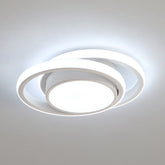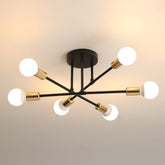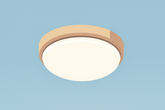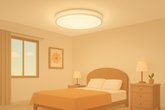Complete Guide to Motion Sensor Lights: Buying, Installation, and Usage Tips
What is a Motion Sensor Light?
A motion sensor light, also called an automatic sensor light, is a lighting fixture controlled by built-in sensors. It automatically turns on or off based on changes in ambient light or human movement, providing a convenient and energy-saving solution for modern homes and commercial spaces.
Main Types of Motion Sensor Lights
1. PIR Motion Sensor Light (Passive Infrared Sensor)
How it works: Uses an infrared sensor to detect heat emitted by human bodies. The light automatically turns on when movement is detected.
Applications: Hallways, staircases, bathrooms, storage rooms, and frequently trafficked areas.
Advantages: Sensitive response, accurate detection of human presence, prevents wasted energy.
2. Light Sensor Motion Light (Photocell)
How it works: Detects ambient light levels and turns on at dusk and off at dawn automatically.
Applications: Outdoor street lights, garden lights, door entrance lights.
Advantages: No manual operation needed, saves electricity bills.
3. Microwave Sensor Light
How it works: Emits microwave signals and detects movement by analyzing reflected waves.
Applications: Large warehouses, garages, and environments with obstructed light.
Note: Highly sensitive and requires careful installation to avoid false triggers.
What to Consider When Buying a Motion Sensor Light
- Detection distance and angle: Ensure it covers the desired area. Typically, household PIR sensors detect 2 to 6 meters with angles from 90° to 180°.
- Delay-off time: Choose models with adjustable delay times to fit your usage habits.
- Waterproof rating: For outdoor use, select lights with at least IP65 rating to ensure durability.
- Voltage and power compatibility: Confirm compatibility with your home or commercial electrical standards.
Installation Tips
- Install the sensor light at a height of 2 to 2.5 meters for optimal detection.
- Avoid blocking the sensor with furniture, doors, or air conditioning vents to maintain sensitivity.
- Avoid direct exposure to strong light sources for photocell sensors to prevent false triggering.
Benefits of Motion Sensor Lights
- Energy saving: Lights only turn on when needed, reducing electricity waste.
- Convenience: Hands-free operation is ideal for elderly people and children.
- Improved safety: Automatic lighting at night prevents falls and deters intruders.
Conclusion
Motion sensor lights are an essential part of modern smart lighting, offering convenience, energy efficiency, and security for homes and businesses alike. By choosing lights with proper detection range, waterproof ratings, and correct installation, you can enjoy a smarter, safer, and more comfortable living environment.














